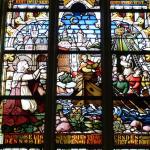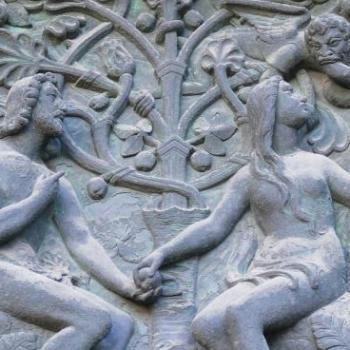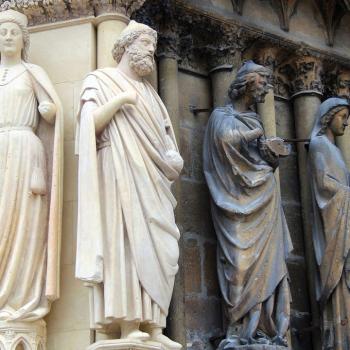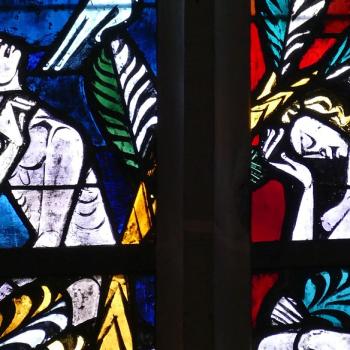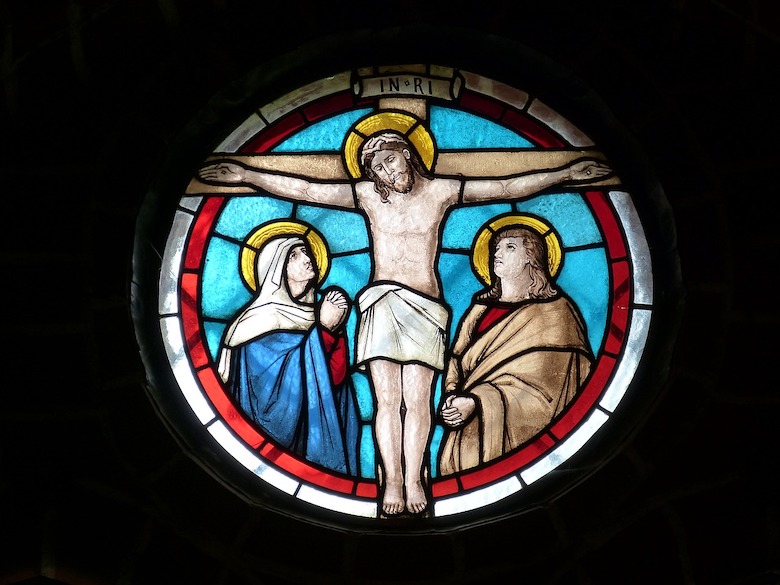
What’s The Difference?
My parents are both ex-Roman Catholic and now Born Again Christians. Mom and Dad went to a Conservative Evangelical church when they first converted. Well – it might not have identified itself that way, but that was the theology. I grew up in that church as it moved further Fundamentalist. It was a church that took pride in the fact that the walls were white and the glass not stained. This church rebelled against the ornate frills and into dogmatic separation.
Most of the congregation was ex-Roman Catholic and they had hangups on the pageantry of high church. Low Church removes the tradition and scoffs at the liturgy. When I was younger, the point was made that the crucifix is not a true Christian symbol. Christ on the cross was unacceptable. Instead, we were to have the bare cross – Jesus isn’t still on the cross, is he?
The Story of the Crucifix
The Crucifix has been used throughout the Early Church. The Early Church would hang a crucifix on the Eastern wall of their home as they would pray to the East. Both Eastern and Western Churches had the crucifix as part of their icons throughout the first 1,500 years. The Protestant Reformation saw all images as being idols and stopped using them. John Calvin was especially anti-icons, including the bare cross. Today, most churches – Reformed churches too – have either a bare cross or crucifix.
The crucifix looks different from tradition to tradition, but there are some similarities. The Western crucifix’s have a single horizontal bean where the Eastern Church includes a beam for the feet. Jesus hangs on the cross, but in some he’s alive and in other’s he’s already dead. Some include the crown of thorns while other’s show a skull and crossbones. Each interpretation tells their own story.
Why The Bare Cross Doesn’t Speak to Me Anymore
If each crucifix tells a story, each bare cross does, too. American Evangelicalism and Fundamentalism focuses on the victory of Jesus. The cross is empty, and so is the tomb. Jesus’ victory is available to his children. We are victorious in Christ and his work on the cross.
The problem is that – sometimes we’re not victorious. I know I am losing a lot more than winning. I can’t love my neighbor as myself and I don’t know what it means to love God sometimes. That was our commandment from Jesus – how to be like him and his work – and I can’t seem to do it. Forget the spiritual smoke and mirrors – sometimes life beats you down. Everything goes wrong, and the thing you spent your whole life working towards isn’t what you thought it would be.
This is when I saw what I was missing in the crucifix. It can be comforting to know that Jesus is victorious over death. It can be reassuring knowing that, in the end, we’re going to be ok. But sometimes you need to know that someone is with you now and knows what you’re going through now. Seeing Jesus on the cross, for me, showed me a God who suffers with us. I don’t see God waiting for me at the finish line anymore. I see God with me now. Jesus shows what love is – love is suffering for another. God is love – and love suffers with those who suffer. That is what I see in the crucifix, and that’s why I look to it when I’m unsteady.
What Now?
There are several religious traditions that I was taught not to experience. I don’t think anything was done maliciously. In fact, I think the love this church had for me and its members is what drove them to be so narrow. The fear of hell can make people do things they wouldn’t have without it looming overhead. Once I learned that these practices and icons were in the Tradition, I wanted to experience them all. You never know what you’ll find in your Christian neighbor’s tradition.


